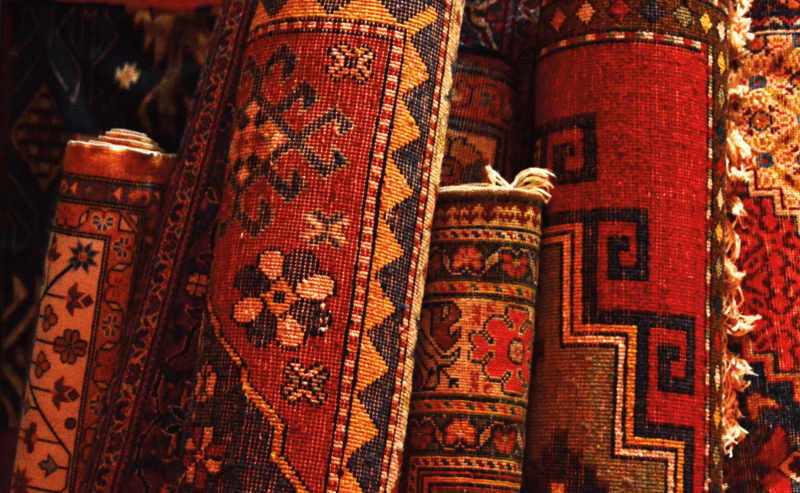The culprit? Knock-off versions made in India and China for a fraction of the cost and sold in retail behemoths for as little as £100. By contrast, handmade Oriental carpets (from Iran, Afghanistan, Pakistan, Nepal and Morocco) typically cost around £5000, hardly surprising as they can take months or even years to craft. The labour is often performed by women from nomadic tribes in their own homes. Every stage is completed without machinery, from dying the wool with natural pigments like pomegranate peel, to spinning it into yarn fine enough to eventually form the millions of knots that make up a finished design. Although there are repeated motifs – tear-drop-shaped boteh, many-layered rosettes, octagonal guls – no two pieces are ever the same due to their artisanal nature.
“It isn’t just the world of makers that has changed beyond recognition either. I’m one of a handful of buyers left in the UK who follows their intuition and picks every piece by hand,” Bruce shouts above the noise of Regent’s Street. “My customers come to me because they know they’re going to get an informed opinion. They don’t have to like it, but they’re definitely going to get one.”
Liberty of London’s mock Tudor façade, complete with beams from two warships, rises like a daydream above the neat Georgian buildings of Great Marlborough Street. Founded in 1875 by Arthur Lasenby Liberty, the emporium originally existed to bring Londoners luxurious objets d’art and fabrics from the Orient. The East, as a symbol of both lavishness and lasciviousness, cropped up throughout literature in the 19th-century, from Samuel Taylor Coleridge’s Kubla Khan to the opium dens of Oscar Wilde’s Dorian Gray. Liberty’s collection quickly won the imaginations – and purses – of Victorian Londoners intoxicated by the exotic.






